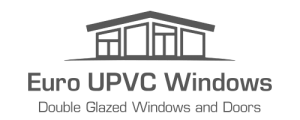This bulletin is aimed at glaziers and customers to assist them with ensuring insulated glass units are correctly oriented.
Significant energy savings can be achieved by using high quality uPVC frames from EURO UPVC WINDOWS, with a suitable choice of Double Glazing. Our standard selection for Double Glazing as follow:
- CLEAR TGH 4mm/18 ARGON GAS/CLEAR INSULGLASS LOW E TGH 4mm
Low-E glass can stop up to 70% of heat loss and 77% of heat gain and saving up to 35% on your energy bills as compared to the standard single glazed aluminium windows. INSULGLASS LOW E an ideal for colder climates with maximum Visible Light, Passive Heat Gain and excellent insulation. - CLEAR LAMINATED 6.38/18 ARGON GAS/CLEAR INSULGLASS LOW E TGH 4mm
Laminated glass is well known as a safety and security glass. However, because of the way it is manufactured, it also acts as an effective barrier for sound. Combination of a different glass selection in double glazing units proves an excellent barrier to noise, it has better Sound Transmission Loss.
Insulation
Insulation – calculated as a “U Value”, which is a measure of heat flow through glass and frame. The lower the “U Value” the better the insulating properties.
insulation.png
Glass as a single material is generally a terrible insulator, however the introduction of air spaces and also adding metal coatings onto glass surfaces can vastly improve this insulation performance.
Solar Control
Solar Control – measured as Solar Heat Gain Coefficient (SHGC) and measures total solar heat transmitted through glass and frame by the combination of direct transmittance and absorbed heat re-radiated inside. The lower the SHGC number the less heat is being transmitted through the glazing.
solarcontrol.png
When direct passive heat from the sun hits the glass, this can allow tremendous amounts of heat inside the building. In many cases this is unwelcome. This can be controlled through the inclusion of tints and/or airspaces and/or coatings.
Visible Light Transmittance (VLT) and Visible Light Reflection (VLR)
Measured as a percentage (%), VLT defines the amount of visible light through the glazing. VLR is the percentage of visible light reflected from the surface. VLR can be further defined from an outside (VLR-out) and inside (VLT-in) measure.
Building designers want buildings to maximise natural light, which in turn reduces power loads for artificial light. This can be improved through the application of spectrally selective coatings, which allow high levels of natural light, yet can effectively reduce higher proportions of infrared and associated heat gain.
AGG Insulglass Select
Insulglass Clear 1.0
Insulglass Plus
Audioshield
